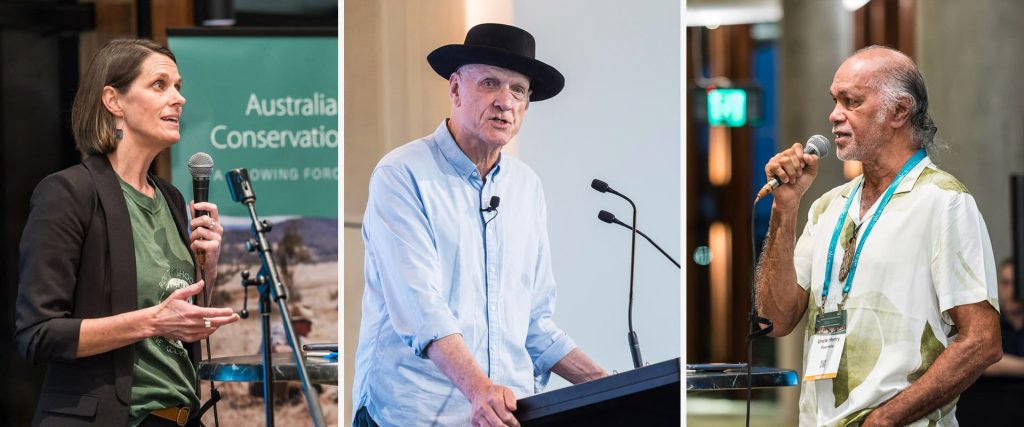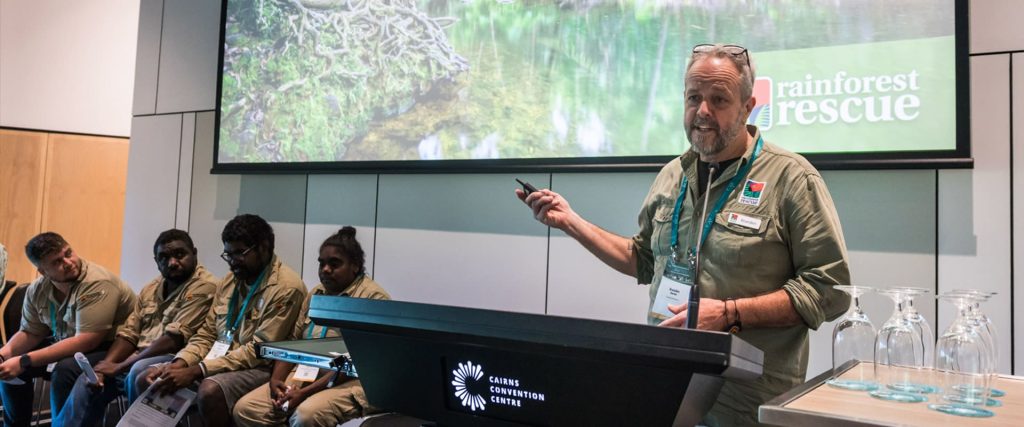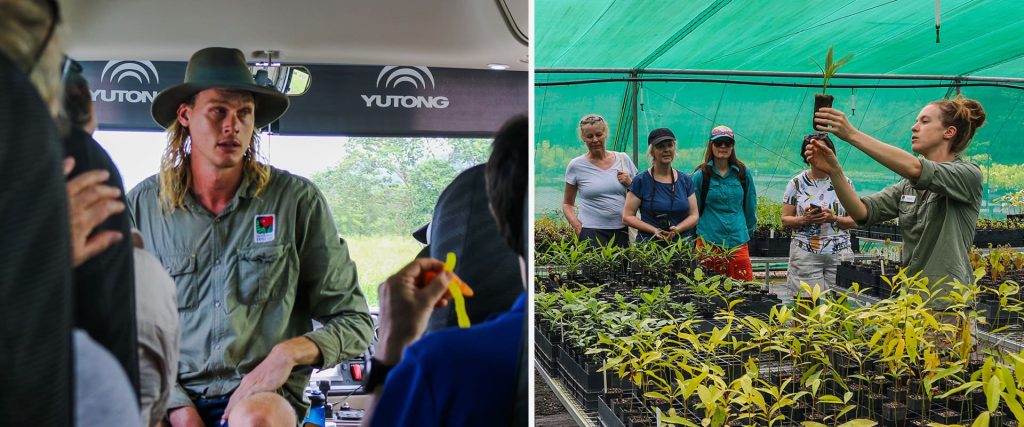ALCA 2025 – Scaling Up: Local Actions for Global Solutions
After an incredible week of showcases, celebration and discussion in Cairns, Branden Barber reflects on thematic learnings from this year’s Australian Land Conservation (ALCA) Conference.
 Jody Gunn, ALCA CEO; Peter Garrett AM; Uncle Henry Fourmile
Jody Gunn, ALCA CEO; Peter Garrett AM; Uncle Henry Fourmile
I was very fortunate to participate in ALCA 2025, which is now in its 9th year and now the leading conservation event in Australia. Not only was I invited to attend the conference as a speaker, sharing the stage with restoration professionals, Traditional Owners, and land owners seeking to protect their landscapes, but I also had the privilege of being amongst the people who came to participate and exchange ideas, inspiration and outcomes.
In attendance were representatives from Traditional Owner groups, tourism, bodies, and tourism operators, restoration, focused, private businesses, and nonprofit organisations, government bodies, including a local representative from our very own Douglas Shire.
ALCA CEO, Dr. Jody Gunn, has transformed and scaled up this impressive organisation. From direct policy, advocacy, supported by strong analysis and impressive experience, to creating a program that literally had something for everyone, no matter what they came for. Jody did a remarkable job of being everywhere all at once throughout the week, all the way down to sharing her inspiring personal journey of working as Dr. Jane Goodall’s personal assistant for many years. And the conference was capped off with an exceptional and inspiring closing keynote from the honourable Peter Garrett AM.
Personally, I felt a true sense of validation that the conference was themed as “Scaling Up: Local Action for Global Solutions”. For us at Rainforest Rescue, it reinforced that while we’re grounded in the Daintree, our work has reach and resonance far beyond.
Here are the sessions that struck a chord and where we are already applying the learnings. You can view the full program of speakers, streams and sessions on the ALCA website.
Workshop “Nature Finance Demystified”
This session was a foundational one — practical case studies and exercises that pulled back the curtain on how Natural Capital is assessed, how restoration projects can tap biodiversity and carbon credits, and how the funding pipelines might actually work. Since we’re heavily invested in building a “Restoration Economy” model, this workshop was priceless. Our Nursery Manager-turned-Biodiversity and Nature Impact Lead, Marine Deliens, was right there absorbing insights on how to make our restoration work both fundable and scalable.
Workshop “Turning Vision into Impact: Building a Theory of Change”
Its always good to revisit the fundamentals: turning big ideas into measurable, outcome-oriented programs. For Rainforest Rescue, this aligns with our emphasis on transparency, showing donors and partners what we’re doing, why, and what difference it makes.
Workshop “Moving Wildlife Revival Beyond the Fence”
A powerful session about landscape-scale connectivity, managing invasive species, and leveraging tech (drones, sensors, mapping) — all of which are relevant to our Daintree-based restoration and cassowary habitat work. It reminded us that restoration can’t just be discrete, dispersed blocks, but part of a larger ecological tapestry.
A moment that stood out: the invocation of the “Seven Generations” principle (shared by Indigenous Elder, Deen Sanders, OAM, PhD., PhD.), which underlined how our actions today echo far into the future.
Plenary “Systems Change for Nature”
A stirring start to the day. The message from the podium was clear: to protect nature meaningfully we must change entire systems—governance, finance, culture. A moment that stood out: the invocation of the “Seven Generations” principle (shared by Indigenous Elder, Deen Sanders, OAM, PhD., PhD.), which underlined how our actions today echo far into the future.
For us, this isn’t just rhetoric—it underpins how Rainforest Rescue makes decisions with long-term stewardship in mind. This inspired our friend and partner, Ro Hill, to reflect upon the fact that while we are doing the hard yards now, we have centuries of restoration ahead of us.
How’s that for inspiring perspective? It’s awesome.
“Culturally-led Care for Country”
Essential for our work with Traditional Owner partners like Jabalbina Yalanji Aboriginal Corporation. This session affirmed that genuine conservation is not just scientific and technical—but cultural, relational, and grounded in Country. The more we listen, collaborate and co-design, the stronger our shared outcomes become.
 Branden Barber, presenting Rainforest Rescue’s story at ALCA 2025.
Branden Barber, presenting Rainforest Rescue’s story at ALCA 2025.
“Diverse Pathways to Conservation Success”
I was honoured to speak at this session, where I spoke of our story so far—from land ‘buy-backs’ to our three-fold program of Protection, Restoration and Conservation Partnerships. I talked about the tension of working with both nature and policy (and an outdated local planning scheme that hasn’t been reviewed since 2018).
It was a rich exchange alongside peers such as Tim Hughes, James Brazill-Boast, Vallerina Aspro, Vernon Bellou, and Jake Muller. Real stories, real landscapes, real partnerships.
“Mind the Gap – Finding a Shared Language for Nature Action”
One of the most practically valuable sessions: how to communicate across sectors—government, business, community, Indigenous groups. For Rainforest Rescue, bridging language and cultures is one of our biggest “gap” challenges. This masterclass gave tools and helped frame the mindset shift we need.
Policy Breakfast
Michael Cornish, Policy Lead at ALCA, laid out the evolving policy landscape—including the emerging “Nature Repair Market”. For us, watching how policy is shifting is critical: when local planning, state regulation and market mechanisms align, restoration is empowered. In the Douglas Shire and the Daintree, we want to be ready and contributing rather than reacting.
“Beyond the View: Tourism as a Nature Ally”
This session resonated deeply. Two of our partners—Mark Olsen (CEO, Tourism Tropical North Queensland) and Robyn Nixon (GM Special Projects, Intrepid Travel) were on stage and brought real volume and voice to the idea that tourism and conservation are not just compatible—but essential co-pillars of our regional economy. Tourism is a major economic driver and nature-based tourism must be integral to our conservation strategy. In the Douglas Shire, the numbers between Tourism and Agriculture are very different. Tourism brought $4bn into the region in 2022, while the agricultural economy is struggling to determine its future. One could argue that every other person here works in Tourism in some way. With Nature Repair and the growing capability to be part of ‘regenerative tourism’ activities, this relationship will only grow.
“Nature on the Ledger: Carbon, Markets & Metrics”
This got deep into how you measure, value and monetise nature outcomes. From metrics to markets, from carbon accounting to biodiversity credits. For Rainforest Rescue’s Cassowary Credits and our carbon credits work, our natural-capital framing, this was extremely useful and pertinent.
“Lessons in Landholder Engagement”
Landed right in our sweet spot—working with private landowners, understanding their motivations, their barriers, their hopes. Rainforest Rescue’s models are all about trust, shared benefit and long-term engagement, and this session underlined how vital that relational work is.
“Many Hands for Healthy Land: Stories of Collaboration”
Collaboration jumped off the page here. Nothing we’re doing is solo. We’re stronger when we link arms—with Traditional Owners, landholders, business, policy makers. This session reminded us of both the art and structure of working together.
Our work never ceases, our urgency never diminishes. It felt like a homecoming and a call to arms at once.
Closing Keynote – Peter Garrett AM
A legend, a voice, a living bridge from activism to policy to nature protection. His keynote was rallying and personal. Something about his message lit up the room: our work never ceases, our urgency never diminishes. It felt like a homecoming and a call to arms at once.
 Rainforest Rescue’s Ariel and Marine guide delegates through our restoration processes and outcomes.
Rainforest Rescue’s Ariel and Marine guide delegates through our restoration processes and outcomes.
Field Trip – Restoration of Tropical Forests in the Daintree
We were immensely proud to host ALCA delegates on this excursion. Delegates visited our Cow Bay Nursery, the Oxbow and NightWings projects. I joined with our Land Manager, Ariel Simon, on the bus telling our story; while Marine gave guided tours at the Nursery. It was powerful to showcase what Rainforest Rescue is doing—and how restoration happens, in real soil, real trees, real community.
Final Thoughts
The theme “Scaling Up: Local Actions for Global Solutions” echoed loudly in every session. For Rainforest Rescue, it reminded us that while our work is deeply local (the Daintree, Private Land, Habitat Corridors, Traditional Owner partnerships), its ripple effects, methodologies and models can scale and be replicated. We’re part of a global conversation, a global movement.
I walked away from ALCA25 more energised, more connected and more confident that we’re on the right path. The challenges are significant—but so are the opportunities. Let’s keep restoring, protecting, partnering—and scaling up together.
Branden Barber, CEO of Rainforest Rescue
Want more good Rainforest news in your life?
Subscribe to our eNews | Follow us on Instagram | Like us on Facebook | Subscribe to our YouTube channel
Help Protect Rainforests Forever
Donate to Protect Rainforests Forever | Become a Rainforest Guardian | Partnership Options

